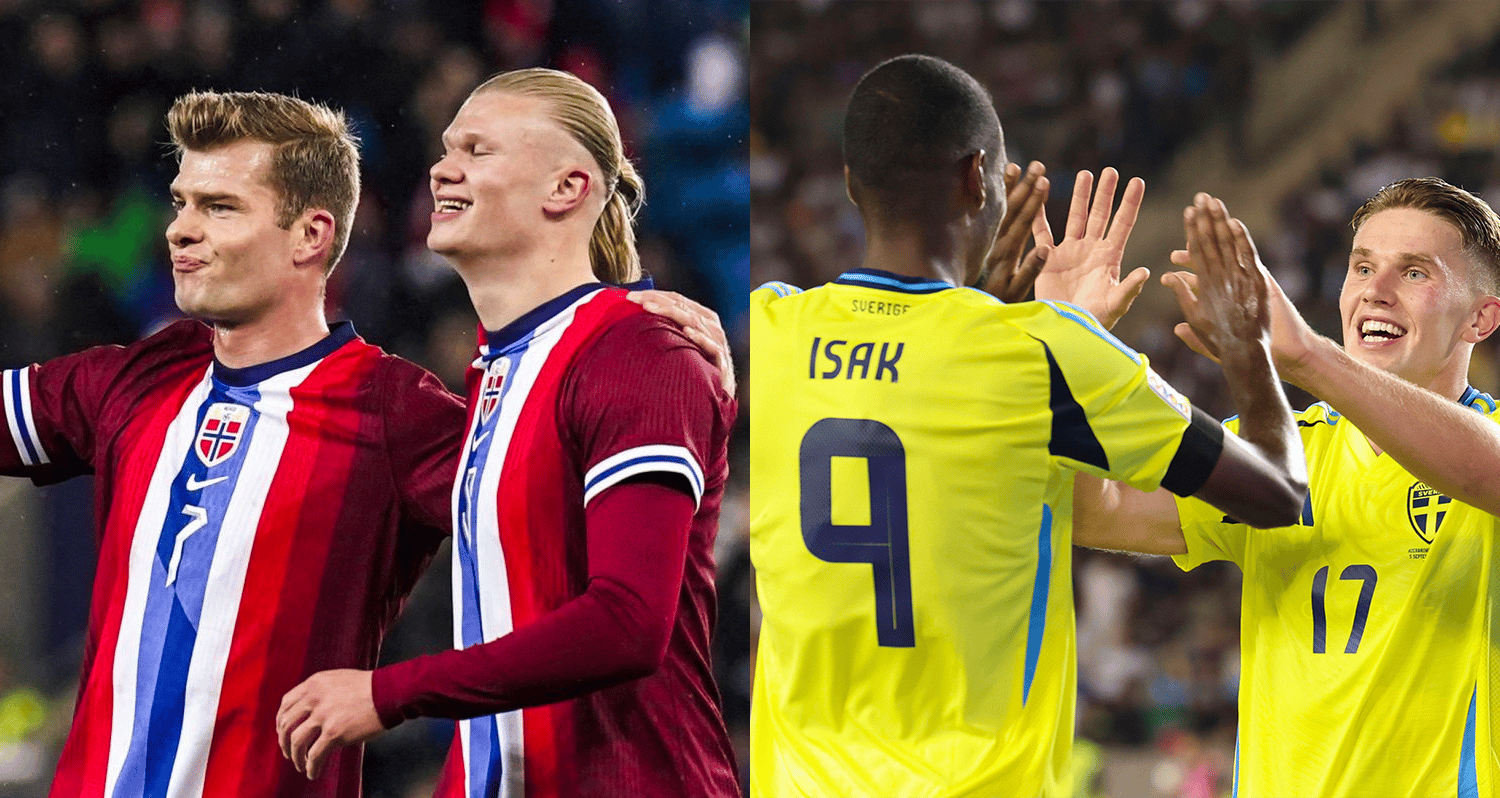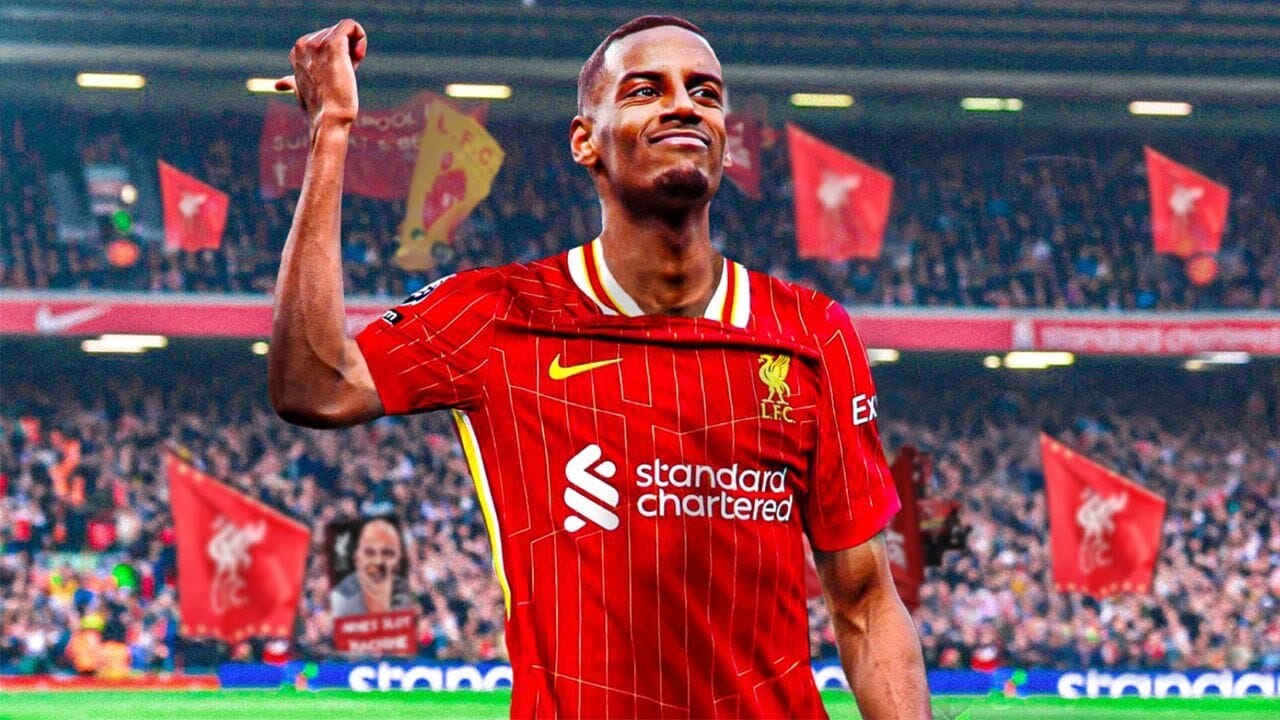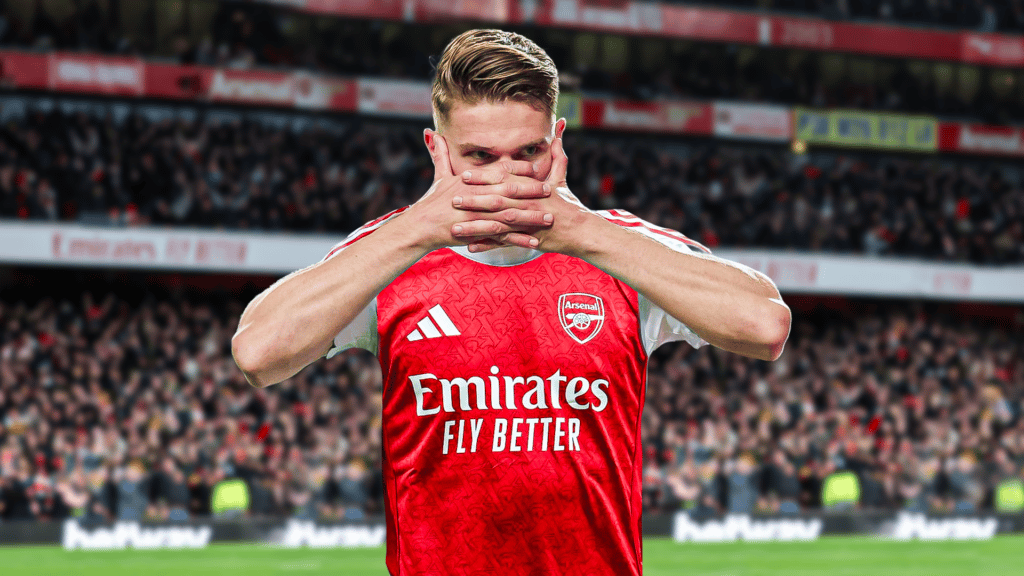Welcome back to The High Ground, a football newsletter that’s as inviting as scoring an open goal... in the Swedish third division, in February, on a 4G pitch, during a snowstorm.
Today’s theme? Scandinavian strikers. Yes, really. We’re diving into the frosty frontline of Europe’s most unexpectedly elite centre-forward factory.
Here’s what we’ve got for you:
🇳🇴🇸🇪🇩🇰 Scandinavia: The Hub of Top Strikers
🔴 Liverpool want Isak
⚪🔴 Viktor Gyökeres Could Be That Upgrade


Scandinavia has quietly transformed into European football’s striker factory, and here’s how it happened—with the precision of data, the grit of Nordic mentality, and infrastructure that turns youth promise into ruthless efficiency.
1. All‑Season Football—And It’s Indoor, on 4G Pitches
Norway and Sweden revolutionized grassroots development by deploying thousands of synthetic 3G/4G pitches. This move turned football into a year-round affair—rain, snow, sleet—it doesn’t matter. Kids are out honing skills daily, building technique consistently and at scale. As one youth coach put it: “the pitches are just open all the time… kids just go and play.”
2. Freedom to Flourish
Unlike the rigid drills common elsewhere, Scandinavia’s youth football is more player-led. Coaches foster creativity, and players are expected to solve on-pitch puzzles themselves—nurturing strikers who can read space, craft shots, and adapt on the fly.
3. Tactical Upgrades Meet Physical Muscle
Denmark’s ‘Danish Dynamite’ in the 1980s made waves with jaw-dropping attacking play long before Haaland and Gyokeres broke out. Today’s Scandinavian forwards combine technical fluency with physical strength—thriving under press, wearing down defenders, and finishing clinically. These leagues rank among the highest in Europe for high-speed running and sprint metrics, matching or exceeding many of the Big Five leagues.
4. Data-Driven Strategy by Midtjylland
FC Midtjylland became Europe’s blueprint for blending analytics with football. Every move is backed by expected-goals models, smart odds, and set‑piece optimization. Their philosophy: ditch guesswork and bias for measurable edge—and win championships (and transfer auctions) with consistency.
5. African Talent Pipeline via Nordsjælland
In Farum, outside Copenhagen, FC Nordsjælland turned academy development into art. Partnering with Ghana’s Right to Dream, they cultivate technically gifted, hungry players—Mohammed Kudus, Kamaldeen Sulemana, Ernest Nuamah among them. These talents are groomed, nurtured with human care, and sold on for millions—all while transforming Scandinavian football’s global reputation.
6. A Proven Launchpad for Global Superstars
Scandinavian clubs fast-track young forwards into first-team action early and frequently. Players like Erling Haaland, Alexander Isak, and Christian Eriksen followed this path, moving to step-up leagues after proving themselves in Scandinavia—making the region a highly trusted scouting ground.
The take‑home? Scandinavia is the scrappy underdog-turned-talent capital: tech‑savvy, player-centric, and surprisingly physical. The region turns raw potential into premium centre-forwards who think fast, run hard, and finish cold-blooded.

Liverpool want Isak

Liverpool’s interest in Newcastle’s 25‑year‑old striker Alexander Isak is heating up—rumors now placing a potential British-record bid in the £120–130 million range. But is this bold dream about to land, or drift off like mere fantasy football speculation?
Liverpool Shakes the Tree
Sources say Liverpool have officially approached Newcastle to discuss a deal—not a bid yet, but a serious conversation about Isak’s availability. Should Newcastle entertain it, Liverpool are reportedly ready to escalate quickly.
That said, Newcastle have firmly insisted Isak is not for sale—convincing FSG and fans alike that the club is in full control.
How Much Would He Cost?
Estimates vary wildly—from around £120 million to over £150 million, depending on structure, payment flexibility, and Newcastle’s own Champions League stance.
The Player’s Perspective
Isak is reportedly “very interested” in moving to Liverpool, viewing it as a club aligned with ambition, Champions League football, and major trophies.
Still, he’s currently contracted until 2028, feels settled in Newcastle, and makes clear he’s not looking to force a move.
Backup Plans: Ekitiké & Beyond
If Isak stays untouchable, Liverpool are reading from Plan B: Hugo Ekitiké of Eintracht Frankfurt has emerged as a top alternative. Newcastle too are in for Ekitiké, sparking a dual domino transfer scenario.
Verdict: Realistic or Reverie?
Dream scenario: Liverpool lands Isak, but only if they break their transfer record and push Newcastle to the edge.
Likely fallback: Ekitiké becomes main man, or Liverpool pivot to other options like Watkins, Osimhen, or Wissa.
Is Isak moving? Fabrizio Romano and internal sources suggest it's “fiendishly difficult” unless something cracks—financially or contractually.
High Ground takeaway: this saga reads like transfer window fiction—but with money this big, even fiction starts bending reality. Liverpool want Isak. Newcastle don’t want to sell. Isak is open but settled. And Ekitiké might be the ghost in the machine.

Viktor Gyökeres Could Be That Upgrade

Arsenal have spent big this summer—now eyeing Viktor Gyökeres to finally sharpen their attack. Let’s break down how this piece could fit into Mikel Arteta’s ambitious rebuild.
What’s the Deal with Gyökeres?
Arsenal are in the final stages of agreeing a deal with Sporting CP for Gyökeres, with reported valuation at £63.5M plus £10M in bonuses (€63.5M + €10M add-ons).
Gyökeres’ form speaks volumes: 54 senior goals in 2024–25, top scorer in consecutive Primeira Liga seasons, and awarded Sweden’s Guldbollen in 2024 .
Why Arteta Is Targeting Him
Arsenal are desperate for a pure finisher—Kai Havertz hasn't delivered consistently as a centre-forward. Gyökeres' stats show serious cutting-edge: over‑performance on his xG by 8+ goals last season alone.
Arsenal generated top-tier xG but underperformed; adding a striker of his calibre could close the gap to Liverpool’s offensive efficiency.
Risks & Fit Considerations
Some question whether Gyökeres is best suited for Arsenal’s methodical build-up play—his strengths lie in transitional attacks, not intricate possession football.
Critics argue the Portuguese league level is lower—but he showed elite form in the Champions League too, scoring more than xG expected in key matches.
Financial Moves & Club Ambition
Alongside Gyökeres, Arsenal are finalizing major transfers: Noni Madueke (~£52M), Kepa, Zubimendi, Nørgaard, and Mosquera, bringing summer spending close to £186–200M.
This avalanche of signings signals one message: Arteta now must deliver silverware—PL or Champions League. Second-place won’t cut it anymore.
High Ground takeaway: Arsenal have hyped-up ambitions and financial muscle. Bringing in Gyökeres could be the missing central striker they've lacked for years. He’s clinical, proven, and driven—and in the right system with supply from Odegaard/Saka, might deliver Arsenal the ruthless edge they've long craved.
Whether his transition to the Premier League and fit in possession-based buildup will pay off is the next big question. But the stakes—and the pressure—could not be higher for Arteta this window.


